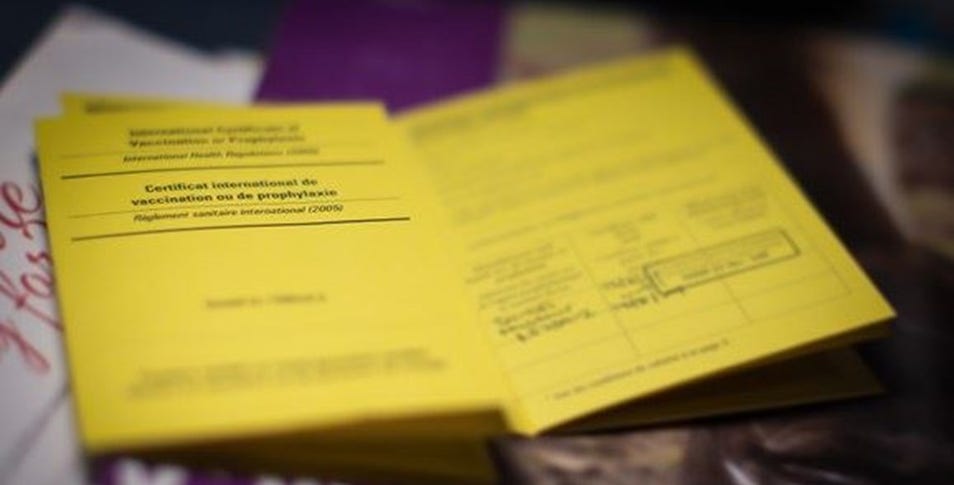Yellow Fever
COCKROACHES

This article contains general advice only and is not a substitute for medical advice. Always seek a professional health care opinion.
As someone who lives in a tropic climate, you will likely find yourself inundated by mosquitoes at some point. Unfortunately, some of those mosquitoes will carry dangerous diseases, including yellow fever. Learning how to recognise early yellow fever symptoms and how to treat it could be crucial to fight against the disease before it leaves you with frightening second-stage symptoms. Read on to find out all about it.
What is yellow fever?
Yellow fever is a serious viral infection that is spread by mosquitoes. The disease gets its name because one of the symptoms that presents in more severe cases is jaundice where the patient’s skin becomes yellow in colour. This disease attacks the liver and can lead to serious illness and even death.
There are two main stages of yellow fever, jungle and urban although they are identical in clinical terms. Jungle yellow fever is used to refer to the stage of the virus where transmission occurs between mosquitoes and non-human primates (such as monkeys). Urban yellow fever is used when the virus is transmitted between mosquitoes and humans.
What causes yellow fever?
Yellow fever is a mosquito-transmitted disease caused by a flavivirus. Two types of mosquitoes are responsible for spreading the virus: the Aedes and the Haemagogus. The virus is usually brought into urban settings by a human who had been infected while in a jungle, tropical rainforest or savannah.
Cases of yellow fever are most prevalent in Africa and Central and South America. Around 2,00,000 cases of yellow fever are reported annually and, from these, at least 30,000 cases end up being fatal.
If you are travelling to forested areas or the jungle, it is worth checking whether there has been an outbreak of yellow fever in the area recently, and taking precautions against it. Read on for an outline of common yellow fever symptoms, and how to prevent the disease from occurring in the first place.
What are some common yellow fever symptoms?
So, what are some of the signs and symptoms of yellow fever? The yellow fever incubation period is about 3-6 days, with mild, stage 1 symptoms appearing after this period. Stage 1 symptoms include:
- Fever
- Muscle pain and backache
- Weakness
- Shivers
- Nausea and vomiting
- Headaches
- Loss of appetite
Around 25% of patients with yellow fever will develop second-stage symptoms which tend to be more severe. The symptoms can lead to death, and include:
- Recurrent fever
- Visible bleeding, including from the stomach
- Blood in vomit and stools
- Jaundice of the eyes and skin
- Liver and kidney failure
Half of all patients who reach stage two will die within a span of 10-14 days.
How do you prevent yellow fever?
There are several ways you can reduce your likelihood of contracting yellow fever. The first is to get a yellow fever vaccination at least 10 days before travelling. A single injection of the vaccine provides 100% immunity 10 days after injection.
The vaccination becomes even more crucial if you intend on travelling to virus-prone areas – or if you live in an area where yellow fever is prevalent. If you do not live in an area where yellow fever is endemic, you will require a booster dose of the vaccine every ten years. You may experience some aftereffects of the yellow fever vaccination including fever, and soreness, redness or swelling at the injection site. These side effects should subside within 7 days.
Travelling to areas with yellow fever
It is worth mentioning that some countries may restrict entry if you have recently spent time overnight in a country that has reported cases of yellow fever. You will need to present a yellow fever vaccination certificate to prove you are not carrying the disease into the country in question.
Other methods of preventing yellow fever involve making sure you are not bitten by mosquitoes. This includes:
- Use home insect repellents to protect yourself from mosquitoes
- Sport loose-fitted clothing which covers your entire skin
- Wear socks
- Refrain from applying aftershave or perfume
- Reducing the chance of mosquitoes biting you by using products such as the Mortein 2-in-1 Insect Spray to kill mosquitoes by spraying directly onto the flying pests.
How do you treat yellow fever?
Yellow fever is usually diagnosed based on symptoms, so it is worth familiarising yourself with the early symptoms of yellow fever if you intend on travelling to virus-prone areas. If you believe you have symptoms of yellow fever, you can get diagnosed via a blood test. Unfortunately, there is no cure for yellow fever, with the treatment offered intended to help alleviate symptoms in the hope that they pass naturally.
Disclaimer: Mortein does not make any warranty that by using these products you will not contract the diseases referred to in this site. Use Mortein as part of a complete preventative plan andplease still take caution. Seek a medical professional for further advice in regard to the above, especially if visiting prone areas.

.jpg?width=360&height=150&format=jpg&quality=80)
.jpg?width=360&height=150&format=jpg&quality=80)
.jpg?width=360&height=150&format=jpg&quality=80)
.jpg?width=360&height=150&format=jpg&quality=80)
.jpg?width=360&height=150&format=jpg&quality=80)
.jpg?width=360&height=150&format=jpg&quality=80)
.jpg?width=360&height=150&format=jpg&quality=80)
.jpg?width=360&height=150&format=jpg&quality=80)